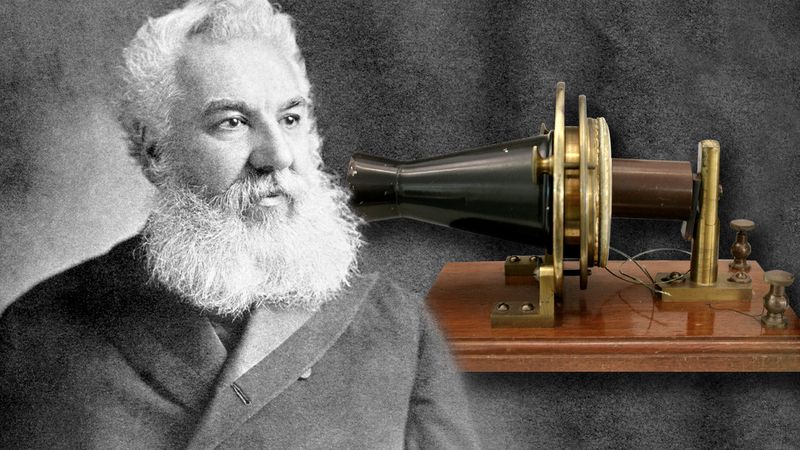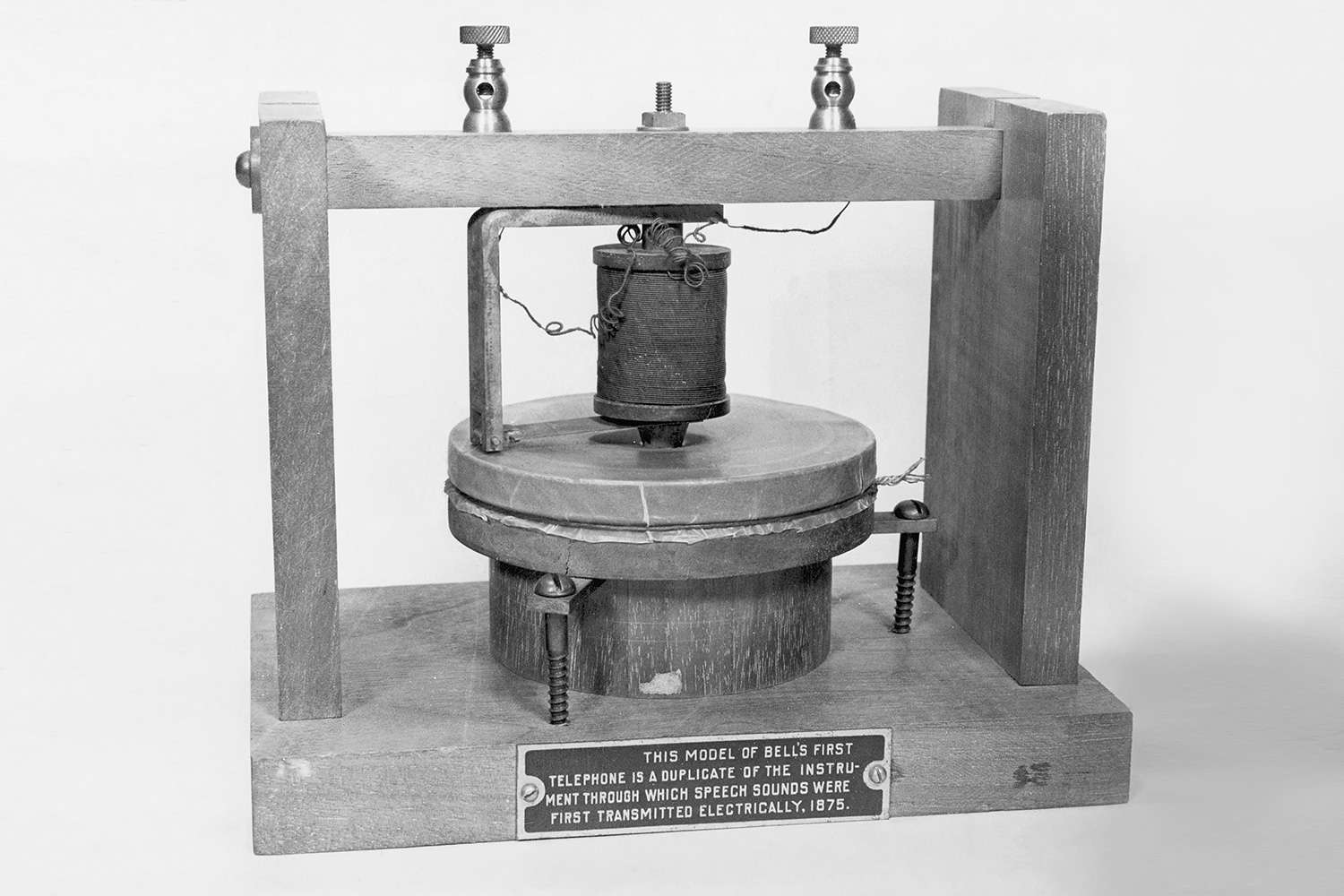Alexander Graham Bell, a renowned inventor during the Industrial Revolution, made significant contributions to the world of communication. His inventions revolutionized the way people communicated and laid the foundation for modern telecommunications.
One of Bell’s most notable inventions was the telephone, which he patented in 1876. The telephone allowed for the transmission of sound over long distances, providing a means of instant communication that was previously unimaginable. This groundbreaking invention not only transformed the way people communicated personally, but it also revolutionized industries such as commerce and journalism, enabling faster and more efficient exchange of information.
Alexander Graham Bell, during the Industrial Revolution, invented the telephone. This revolutionary device allowed people to communicate over long distances using electric signals. Bell’s invention transformed the way people communicated, ultimately leading to the development of global telecommunications networks. The telephone played a crucial role in the advancement of society during the Industrial Revolution by improving communication efficiency and connecting people across vast distances.

Contents
- The Inventions of Alexander Graham Bell During the Industrial Revolution
- Legacy and Impact
- Inventions by Alexander Graham Bell during the Industrial Revolution
- Key Takeaways:
- Frequently Asked Questions
- 1. How did Alexander Graham Bell contribute to the Industrial Revolution?
- 2. What was the significance of Bell’s telephone invention?
- 3. How did Bell’s photophone contribute to communication technology?
- 4. What improvements did Bell make to the phonograph?
- 5. What is Alexander Graham Bell’s lasting impact on the world?
The Inventions of Alexander Graham Bell During the Industrial Revolution
Alexander Graham Bell, a Scottish-born inventor and scientist, made significant contributions during the Industrial Revolution. His inventive mind and scientific curiosity led to the creation of revolutionary devices that had a profound impact on communication and technology. Let’s explore some of the key inventions by Alexander Graham Bell that emerged during this transformative period in history.
The Telephone: Revolutionizing Communication
Perhaps the most iconic and transformative invention by Alexander Graham Bell was the telephone. In 1876, Bell patented his device, marking a major milestone in the history of communication. The telephone enabled the transmission of sound over long distances, eliminating the need for physical mail or messengers.
Bell’s invention of the telephone was a breakthrough that changed the way people communicated. It brought distant voices into close proximity and connected individuals beyond the limitations of geography. The telephone became an essential tool for businesses, households, and governments, facilitating real-time conversations and information exchange.
This invention laid the foundation for the modern telecommunications industry, shaping the way we interact and communicate in the digital age. It was a pivotal innovation during the Industrial Revolution, where the need for efficient and rapid communication was paramount.
Bell’s telephone not only revolutionized communication during the Industrial Revolution but also continues to shape our world today. It paved the way for newer technologies such as smartphones and the internet, where instantaneous communication has become a fundamental aspect of our daily lives.
The Photophone: Transmitting Sound Wirelessly
In addition to the telephone, Alexander Graham Bell also invented the photophone. Although less well-known than the telephone, the photophone was a groundbreaking device that transmitted sound using light. It was an early version of wireless communication and can be seen as a precursor to technologies like fiber optics.
The photophone worked by modulating a beam of light using a sound source, such as a human voice. The modulated light beam was then received by a photo-sensitive device, converting the variations in light back into sound waves. This invention demonstrated the potential for transmitting sound wirelessly, anticipating future advancements in wireless communication technology.
Although the photophone did not gain widespread adoption, it was a significant step forward in the exploration of wireless communication possibilities. Its invention showcased Bell’s innovative thinking and set the stage for further advancements in the field of telecommunications.
The Graphophone: Advancing Sound Recording
Alexander Graham Bell’s contributions to sound recording technology are often overshadowed by his telephone invention. However, he also played a crucial role in the development of the graphophone, an early device for recording and reproducing sound.
The graphophone improved upon previous sound recording technologies, such as Thomas Edison’s phonograph. Bell’s device utilized a wax-coated cylinder to capture sound waves and play them back. This innovation allowed for improved sound quality and greater durability of recordings.
The graphophone’s advancements were significant for the entertainment industry, as it made it possible to produce high-quality recordings of music and speech. It laid the groundwork for the modern record player and vinyl records that became popular in the 20th century.
Other Notable Inventions and Contributions
Apart from the telephone, photophone, and graphophone, Alexander Graham Bell made several other notable inventions and contributions during the Industrial Revolution.
Metal Detector
Bell’s curiosity and scientific research led him to invent the first metal detector. Originally developed to locate a bullet lodged in President James Garfield’s body, the device paved the way for the later development of more sophisticated metal detection technology.
Hydrofoil
Bell’s interest in aeronautics and engineering inspired him to design and construct a hydrofoil, a watercraft that uses wing-like foils to lift the hull out of the water, reducing drag and increasing speed. His innovations in hydrofoil technology laid the foundation for future advancements in maritime transportation.
Education for the Deaf
In addition to his inventions, Alexander Graham Bell made significant contributions to education for the deaf. He was involved in the development of a universal sign language and advocated for the integration of deaf individuals into mainstream society.
Scientific Research and Discoveries
Bell’s scientific research extended beyond his inventions. He made important discoveries in fields such as medicine, genetics, and aviation. His investigations into sound and speech also contributed to our understanding of the human auditory system.
Legacy and Impact
Alexander Graham Bell’s inventions during the Industrial Revolution had a profound and lasting impact on society. His pioneering work in the field of telecommunications revolutionized communication and paved the way for modern technologies that connect people across the globe.
Moreover, Bell’s contributions extended beyond his inventions, as he made significant advancements in various scientific disciplines and advocated for inclusive education for the deaf. His dedication to innovation and exploration left a lasting legacy, inspiring future generations of inventors and scientists.
Alexander Graham Bell’s inventions and contributions during the Industrial Revolution continue to shape our world today. They serve as a testament to the power of human ingenuity and the transformative impact of technological advancements.

Inventions by Alexander Graham Bell during the Industrial Revolution
Alexander Graham Bell, the Scottish-born inventor, made several significant inventions during the Industrial Revolution. One of his most famous inventions was the telephone, which revolutionized communication and became a cornerstone of modern society. Bell’s telephone enabled people to transmit voice messages effortlessly over long distances, improving communication efficiency and connecting people across the globe.
Aside from the telephone, Bell also made significant contributions to telegraphy and the development of electric communication. He invented the photophone, a device that transmitted sound on a beam of light, laying the foundation for modern fiber optic communication technology.
In addition, Bell’s innovative mind led him to create other inventions during the Industrial Revolution. He experimented with flight, designing and building multiple versions of flying machines. While he didn’t achieve sustained flight like the Wright brothers, his groundbreaking work contributed to the development of aviation.
Key Takeaways:
- Alexander Graham Bell invented the telephone during the Industrial Revolution.
- The telephone revolutionized communication by allowing people to talk to each other over long distances.
- Bell’s invention was a significant advancement in the field of telecommunications.
- The telephone paved the way for the development of future technologies, such as smartphones.
- Bell’s invention had a profound impact on society, transforming the way people communicate and connect.
Frequently Asked Questions
Alexander Graham Bell was a prominent inventor during the Industrial Revolution. His inventions revolutionized communication and had a significant impact on the world.
1. How did Alexander Graham Bell contribute to the Industrial Revolution?
Alexander Graham Bell made significant contributions to the Industrial Revolution through his invention of the telephone. The telephone revolutionized communication by allowing people to communicate over long distances, completely changing the way people interacted and conducted business. Bell’s telephone invention laid the foundation for the modern telecommunications industry and set the stage for further advancements in communication technology.
In addition to the telephone, Bell also made contributions to other areas during the Industrial Revolution. He worked on the development of the photophone, a device that used light to transmit sounds, and made improvements to the phonograph, a device for recording and playing back sound. His innovations in these areas helped pave the way for future advancements in telecommunications and audio technology.
2. What was the significance of Bell’s telephone invention?
Bell’s telephone invention was significant because it revolutionized communication. Before the telephone, people relied on written letters and telegrams to communicate over long distances, which was time-consuming and often unreliable.
The telephone allowed for instant, real-time communication, making it much more efficient and convenient. It facilitated business transactions, improved personal connections, and opened up new opportunities for collaboration and innovation. Bell’s invention laid the groundwork for the modern telecommunications industry, shaping the way we communicate today.
3. How did Bell’s photophone contribute to communication technology?
Bell’s photophone was an early experimental device that used light to transmit sound. It was a groundbreaking invention that laid the foundation for future advancements in wireless communication.
Although the photophone was not widely adopted during Bell’s time, it paved the way for the development of fiber optics, which are now used in modern telecommunications for high-speed data transmission. Bell’s pioneering work on the photophone contributed to the advancements in communication technology that we benefit from today.
4. What improvements did Bell make to the phonograph?
Bell made significant improvements to the phonograph, a device for recording and playing back sound. He replaced the tin foil cylinder used in the original design with a wax-coated cardboard cylinder, which improved the durability and quality of the recordings.
Bell’s improvements to the phonograph made it more practical and commercially viable. His work on the phonograph laid the foundation for further advancements in audio recording and playback technology, ultimately leading to the development of modern music players and recording devices.
5. What is Alexander Graham Bell’s lasting impact on the world?
Alexander Graham Bell’s inventions, particularly the telephone, have had a lasting impact on the world. His telephone invention revolutionized communication, connecting people across long distances and shaping the way we interact and conduct business. Bell’s work on the photophone and improvements to the phonograph also contributed to advancements in communication and audio technology.
Furthermore, Bell’s contributions went beyond technology. He was a pioneer in the field of education for the deaf and became one of the founders of the National Geographic Society. His legacy as an inventor and philanthropist continues to inspire future generations and his impact on the world cannot be understated.
To sum up, Alexander Graham Bell made significant contributions during the Industrial Revolution. He is most famous for inventing the telephone, which revolutionized communication globally. Bell’s invention paved the way for the development of modern telecommunications systems that we rely on today.
In addition to the telephone, Bell also made notable contributions in other fields. He worked on inventions related to sound recording, including the graphophone. Bell’s innovations played a crucial role in shaping the modern world and laid the foundation for future advancements in communication technology.